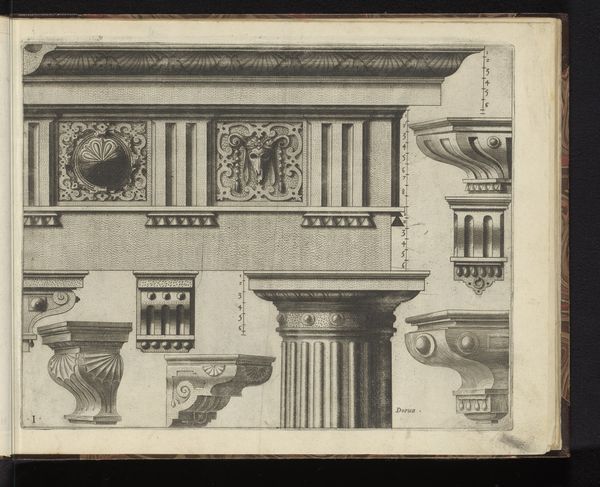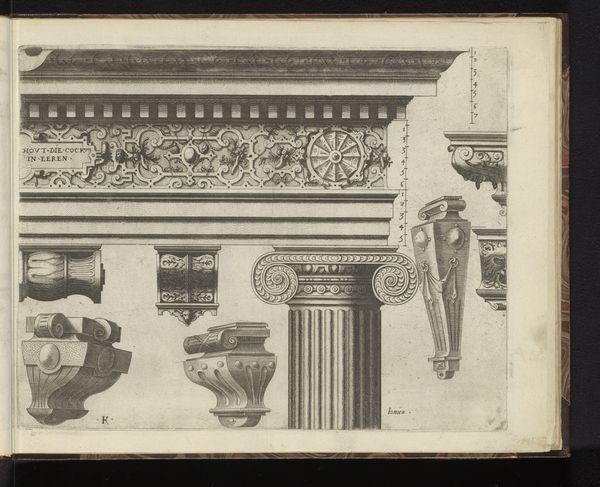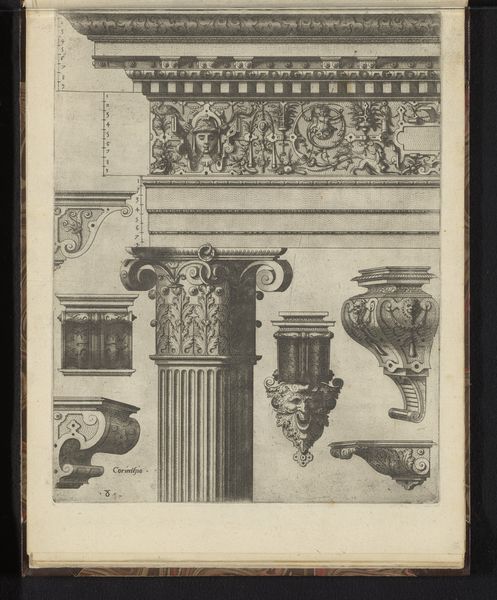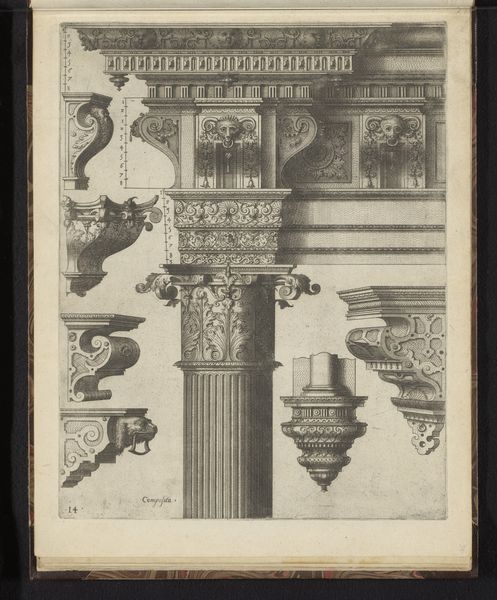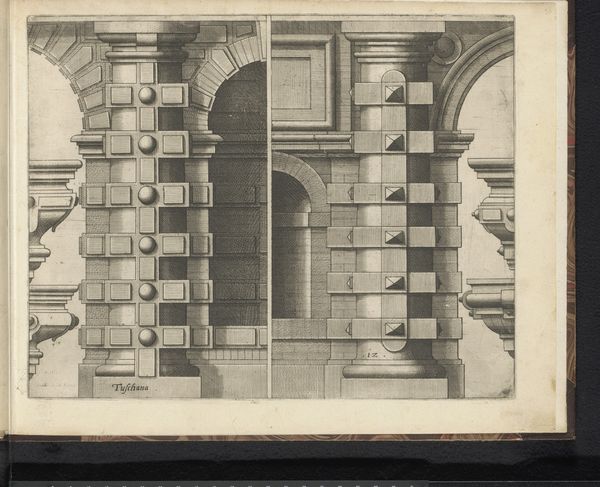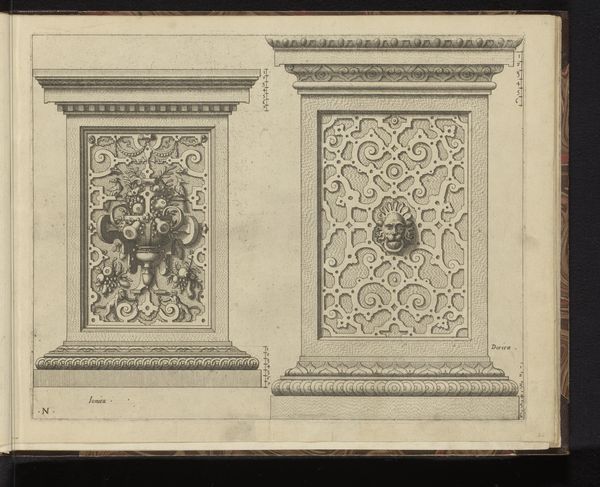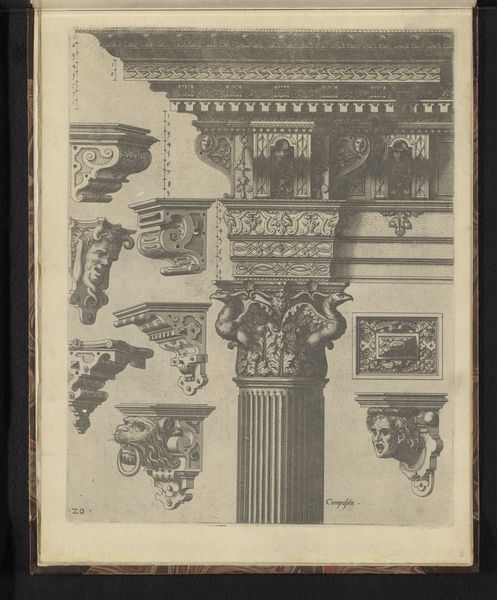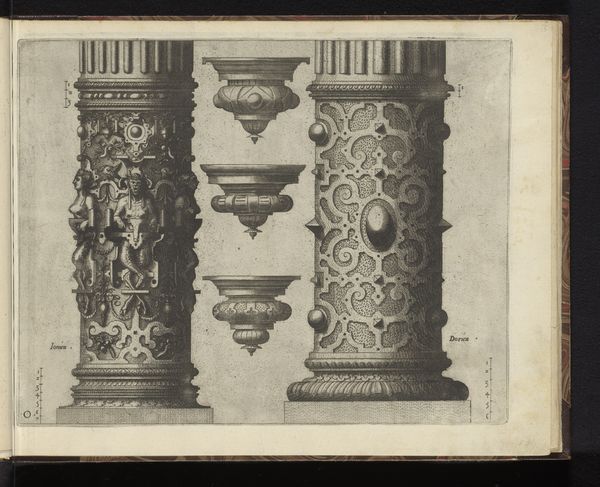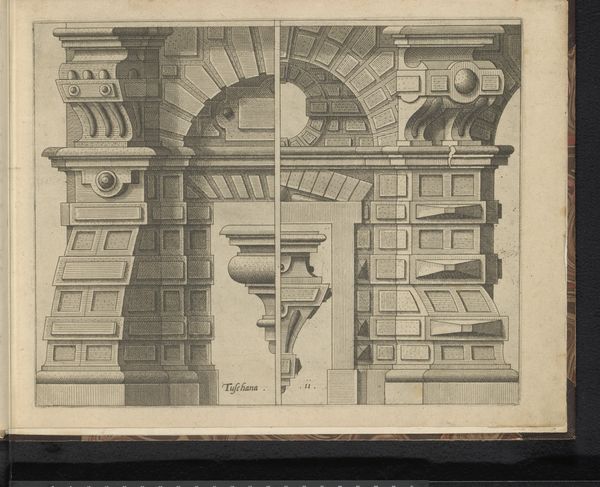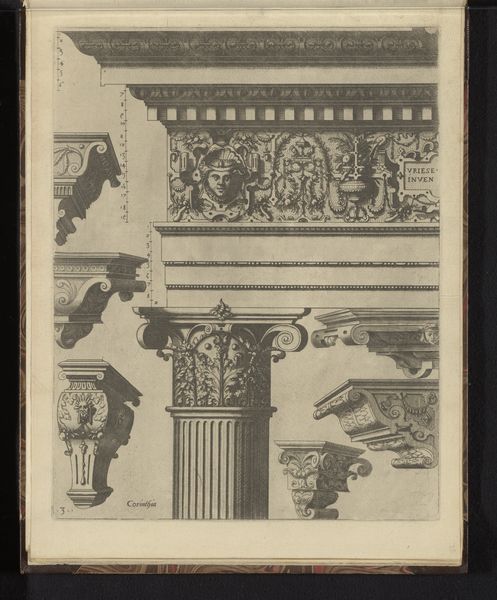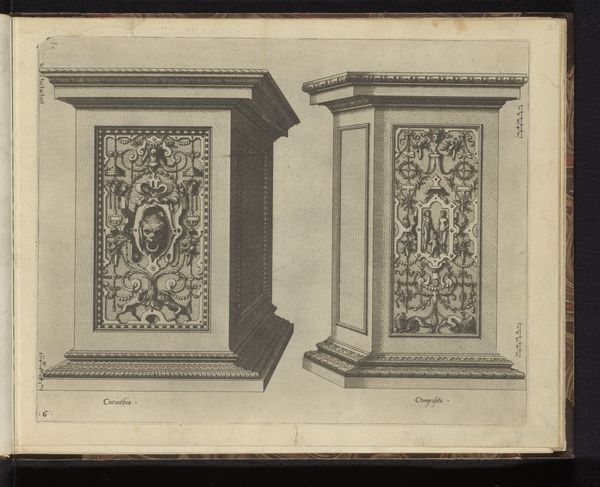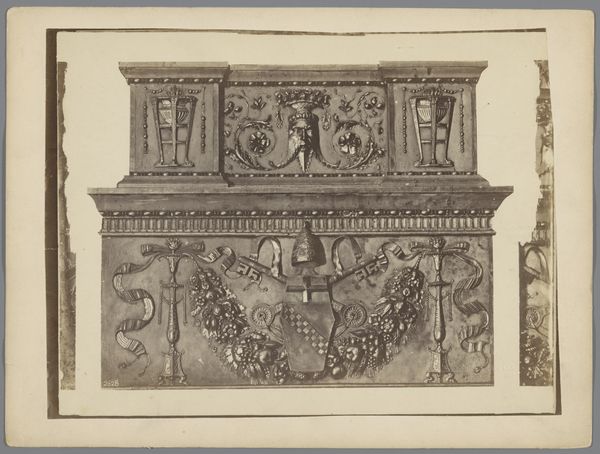
Ionisch hoofdgestel, vijf consoles en een pilaster 1565
0:00
0:00
drawing, print, metal, paper, engraving, architecture
#
drawing
#
ink paper printed
# print
#
metal
#
paper
#
form
#
11_renaissance
#
line
#
engraving
#
architecture
Dimensions: height 236 mm, width 301 mm
Copyright: Rijks Museum: Open Domain
Editor: Here we have "Ionic Capital, Five Consoles, and a Pilaster," an engraving made around 1565 by Johannes or Lucas van Doetechum. It feels almost like a construction manual page, depicting various architectural elements with precise lines. What draws your attention when you look at it? Curator: I see a deep reverence for classical ideals being meticulously revived. The Ionic capital itself is rich with symbolism – those volutes, or spiral scrolls, echo the horns of a ram, a sacred animal, evoking ideas of strength, sacrifice, and even divine communication. The other consoles, each with their unique ornamentation, seem to hint at different functions or levels of importance within a building. Do you think the details were intended as pure decoration, or could they have held a deeper meaning for viewers? Editor: That’s interesting! I hadn’t considered the symbolic weight of architectural details. So, each element could be ‘speaking’ to the viewer. Curator: Exactly! The Renaissance was obsessed with unlocking the wisdom of the ancients. Architects and artists saw themselves as conduits, reviving lost languages of form. Notice the repeated use of faces – human and animal? In architectural iconography, these are rarely mere decoration. They often represent virtues, vices, or even specific historical figures, creating a layered narrative within the building itself. Editor: So, this isn't just about pretty designs, but about communicating complex ideas through visual symbols. It’s almost like reading a story within the stone and engravings. Curator: Precisely. And the challenge for us, centuries later, is to decipher those visual codes, to understand what stories these forms were meant to tell. Editor: I’ll definitely look at architecture differently now! I'll start considering how each part tells a story. Thanks! Curator: My pleasure. The world of symbolism awaits!
Comments
No comments
Be the first to comment and join the conversation on the ultimate creative platform.
